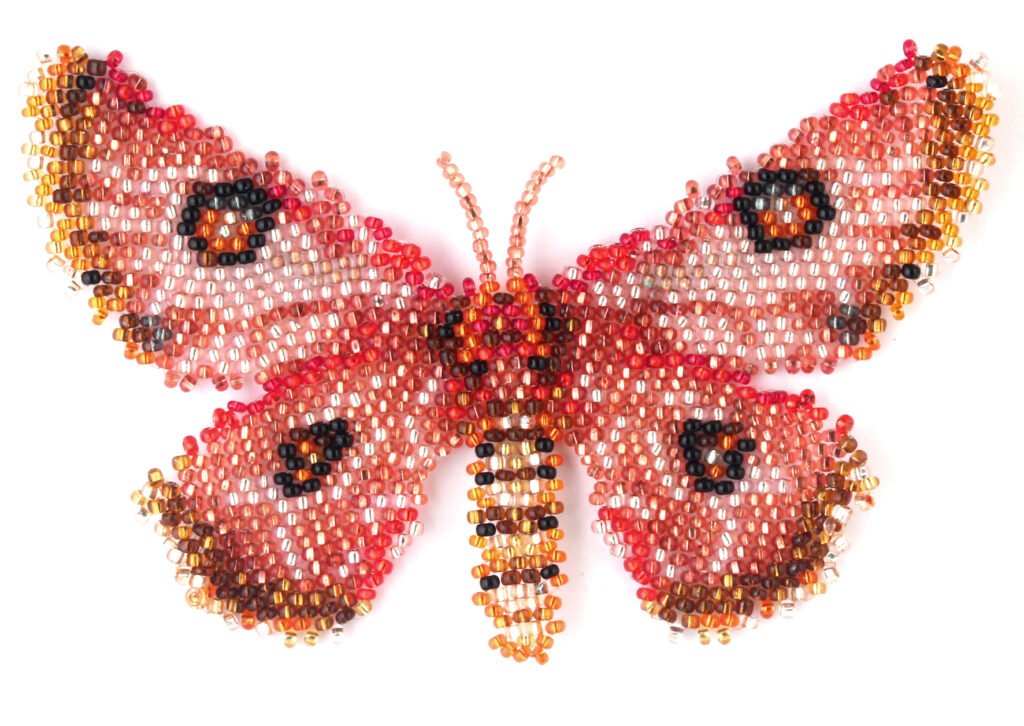
Eochroa trimenii (Felder, 1874) is a moth of South Africa. The wingspan is about 7 cm.
This bead moth is woven of 19 colours.
The bead pattern is available at https://bead-patterns.com/beadpattern/eochroa-trimeni-moth

Eochroa trimenii (Felder, 1874) is a moth of South Africa. The wingspan is about 7 cm.
This bead moth is woven of 19 colours.
The bead pattern is available at https://bead-patterns.com/beadpattern/eochroa-trimeni-moth
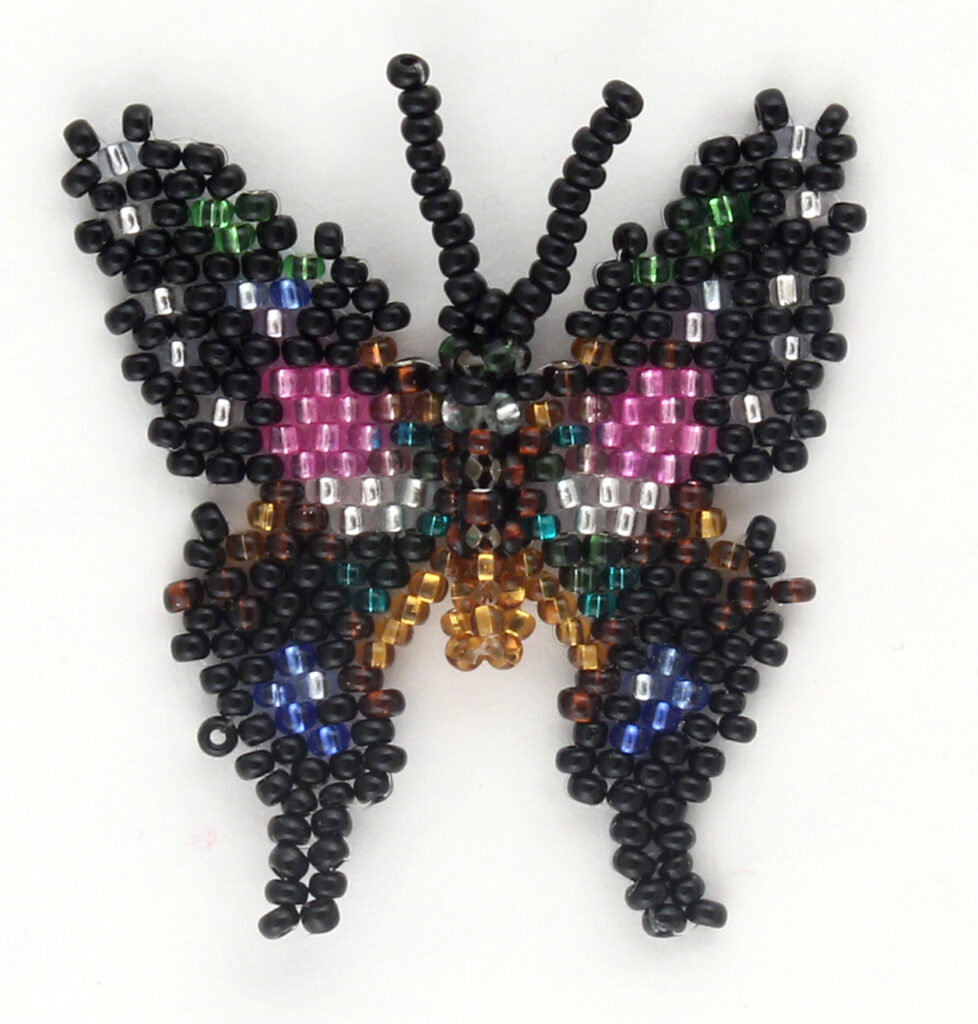
Graphium weiskei (Ribbe, 1900) or Purple Spotted Swallowtail inhabits only mountain regions of Papua New Guinea. It lives at the height 1200-3000 meters above sea level and spends most of its time high in the forest canopy. The wingspan is 50-60 mm.
This bead butterfly is woven of 16 colours. The bead pattern is available at https://bead-patterns.com/beadpattern/butterfly-graphium-weiskei-small
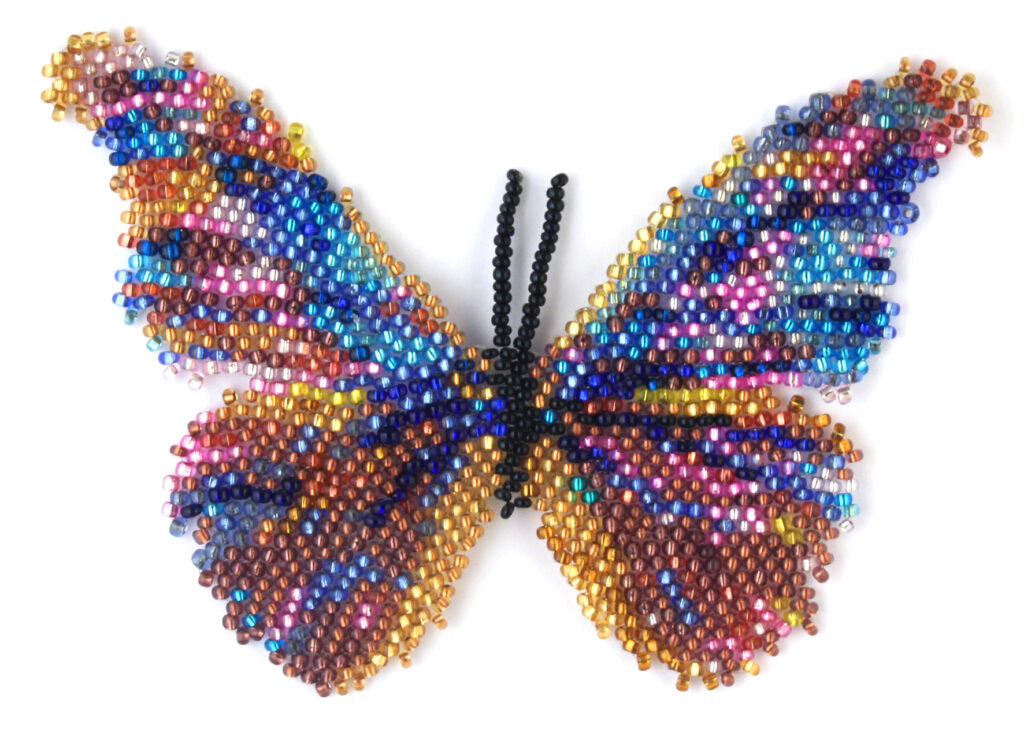
Morpho rhetenor (Cramer, 1775)
Morpho butterflies have metallic shimmering shades of blue and green on dorsal side of their wings. Such colouration is a result not of pigmentation but of iridescence. So, the colours we see vary with viewing angle, they may change from ligth cyan to deep green from pale pink to dark violet in the same place.
Thus two wings of one Morpho butterfly almost always look different.
Morpho Rhetenor inhabits South America. It is found in Surinam, French Guiana, Brazil, Peru, Ecuador, Colombia and Venezuela.
The wingpsan of this butterfly is about 14 cm.
This bead butterfly is woven of 22 colours.
The bead pattern is available at https://bead-patterns.com/beadpattern/butterfly-morpho-rhetenor
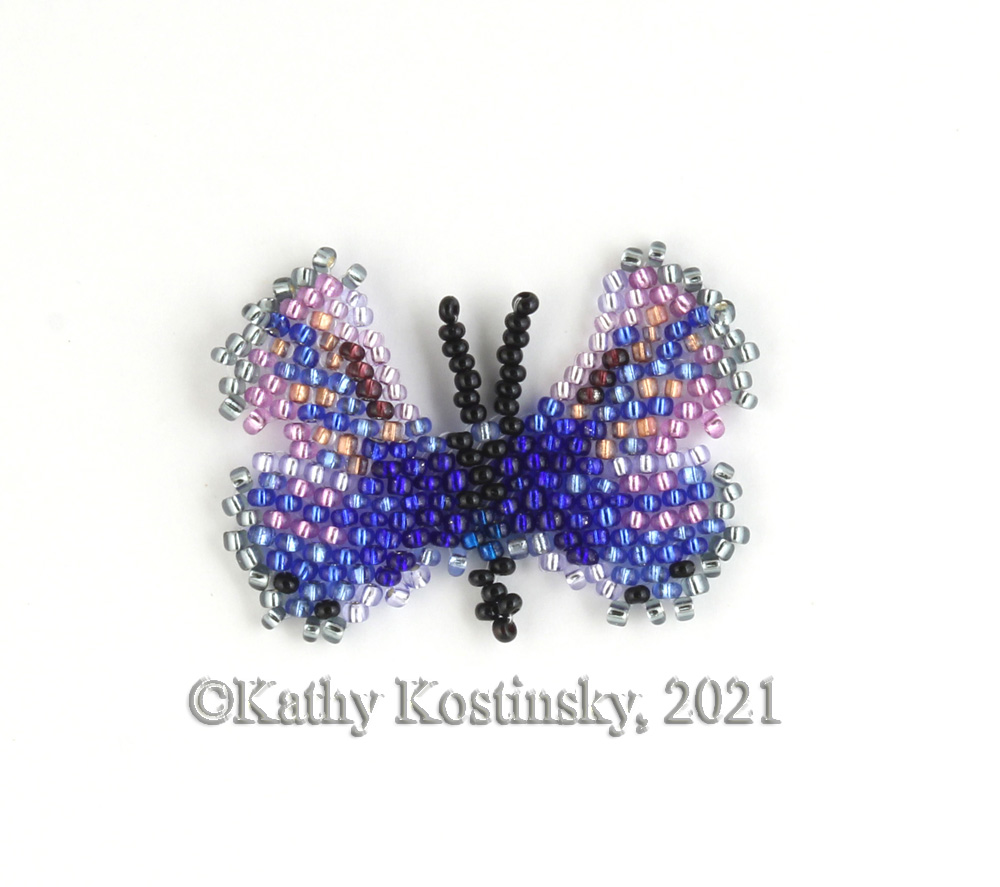
Nacaduba biocellata (C. & R. Felder, 1865), or the Two -Spotted Line Blue,(first described by Cajetan and Rudolf Felder, father and son,Austrian entomologists in 1865) is a 20 mm wingspan Indo-Australian butterfly also inhabiting Singapore. Its pale-yellow caterpillar feeds on acacia and turns to red (or sometimes green) colour before becoming a pupa. It takes the butterfly of about a fortnight from a new-born egg to an imago (an adult butterfly).
The bead butterfly is woven of 13 colours.
The bead pattern is available at https://bead-patterns.com/beadpattern/nacaduba-biocellata-butterfly
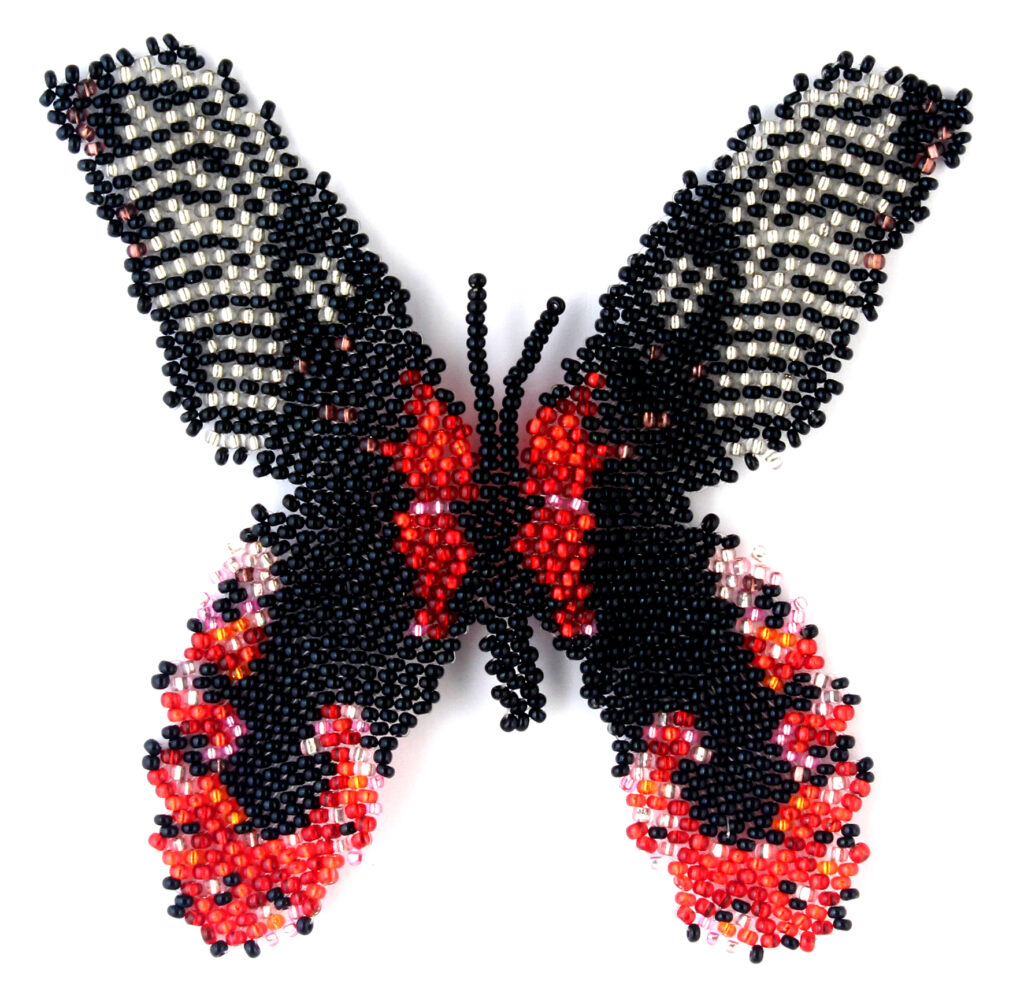
Papilio rumanzovia (Eschscholtz, 1821), or the scarlet Mormon or red Mormon is named in honor of Nikolay Rumyantsev, Russian wise diplomat and generous philanthropist. In 1815 Nikolay Rumyantsev sponsored a a round-the-world sea expedition on the ship “Rurik” under the command of Otto Kotzebue for the discovery and development of the Northwest Passage: a sea route from the Bering Sea to the Atlantic Ocean along the coast of North America. The expedition lasted three years and was also ethnographic and natural-scientific in nature.
It was during this expedition in the Philippines that the Russian entomologist Johann Eschscholtz first discovered and then described a large (up to 14 cm in wingspan) black-pink-red butterfly, which he named after the organizer of the expedition, the Rumyantsev’s swallowtail (Papilio rumanzovia).
It is remarcable that inspite the bright, frightening coloring of the undersides of the wings, Papilio rumanzovia is non-venomous. However, by pretending to be dangerous, it avoids being attacked by birds.
Papilio rumanzovia inhabits Philippines and Taiwan.
This bead butterfly is woven of 9 colours.
The bead pattern is available at https://bead-patterns.com/beadpattern/butterfly-papilio-rumanzovia
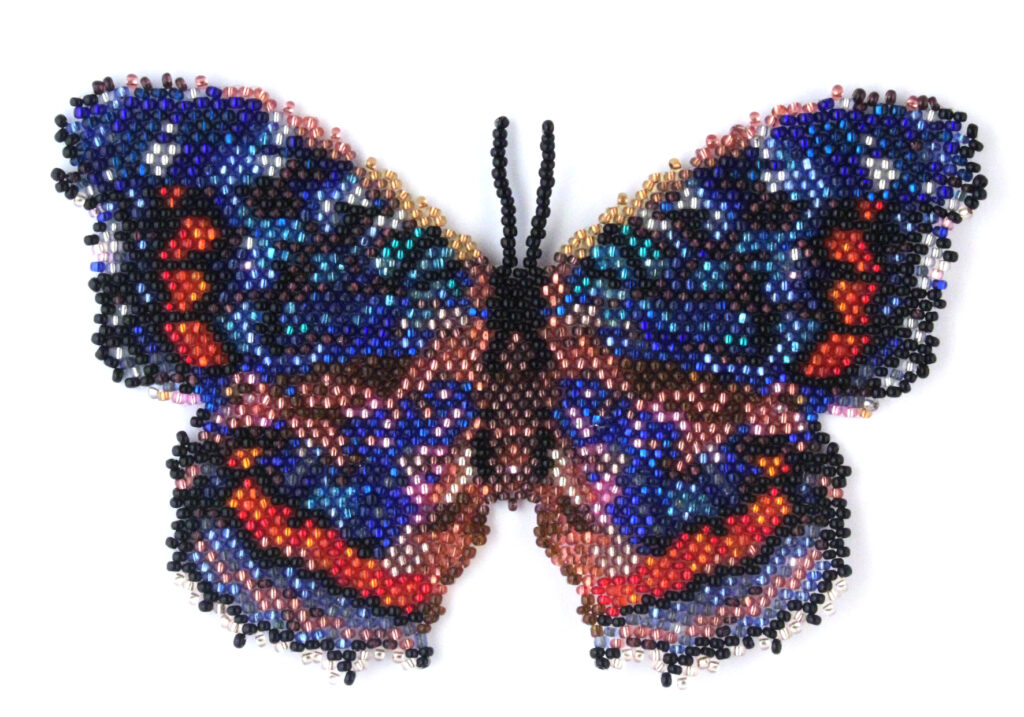
Precis octavia (Cramer, 1777), or Gaudy Commodore is an African butterfly. Its southern subspecies has a summer form (natalensis), flying in dry season, which is red with black markings, and a winter form (sesamus), flying in rainy season, which is blue with a line of red markings on the wings.
The wingspan is about 60-70 mm.
This bead butterfly is woven of 26 colours.
The bead pattern is available at https://bead-patterns.com/beadpattern/butterfly-precis-octavia-sesamus
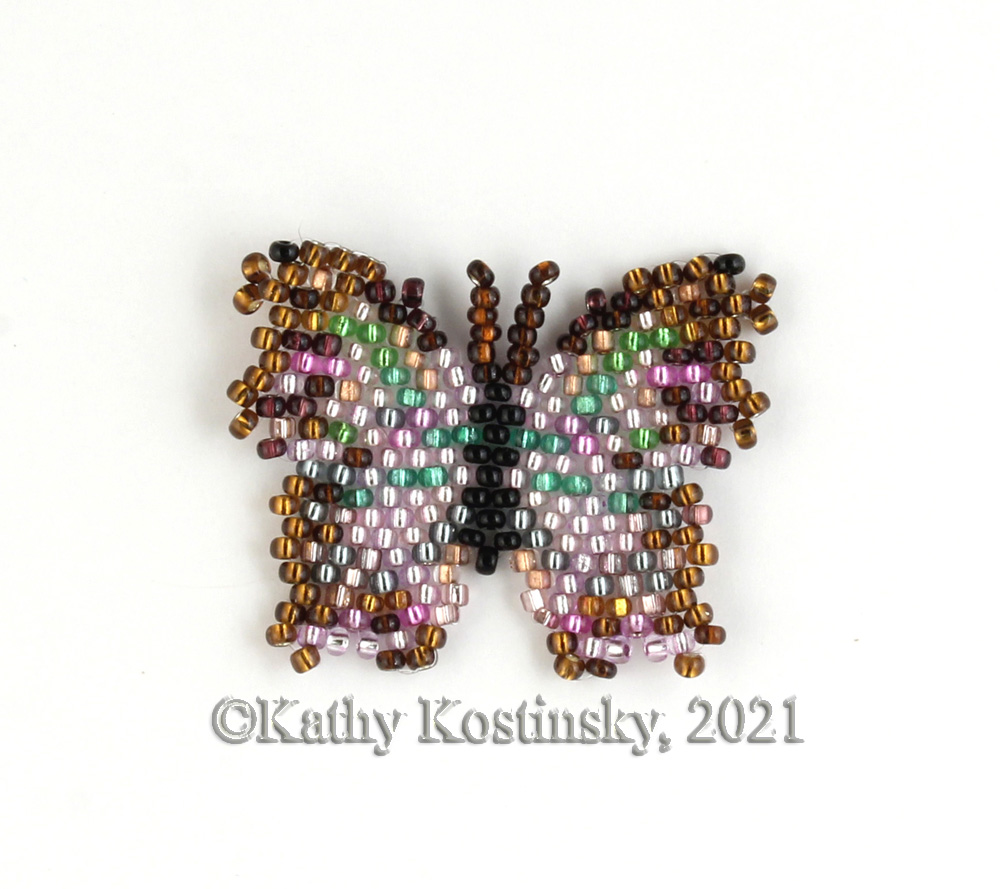
Protogoniomorpha (Salamis) parhassus (Drury, 1782), or the Forest Mother-of-Pearl or Common Mother-of-Pearl is an African butterfly, flying in forested areas.
Its wingspan is 65-90 mm.
This bead butterfly is woven of 15 colours.
The bead pattern will be available later.

Schinia florida (Guenée, 1852), or the Primrose Moth inhabits North America from Alberta to Nova Scotia south in east to northern Florida and Texas.
Its wingspan is 2 cm.
The bead moth is woven of 15 colours.
The bead pattern is available at https://bead-patterns.com/beadpattern/moth-schinia-florida-small

Schinia florida (Guenée, 1852), or the Primrose Moth inhabits North America from Alberta to Nova Scotia south in east to northern Florida and Texas.
Its wingspan is 2 cm.
The bead moth is woven of 15 colours.
The bead pattern will be available later.
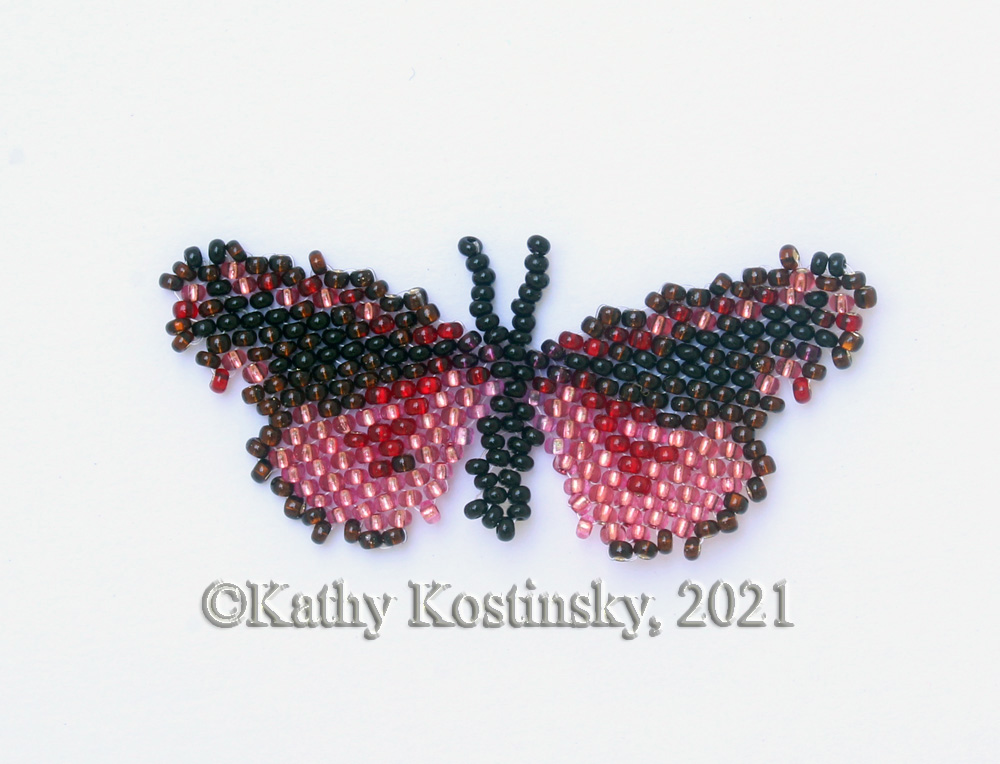
Tyria jacobaeae (Linnaeus, 1758), or the cinnabar moth is found in Europe and western and central Asia.
Its wingspan is 31-41 mm.
The moth has proven to be particularly successful as a biocontrol agent for ragwort when used in conjunction with the ragwort flea beetle in the western United States.
The bead moth is woven of 9 colours.
The bead pattern will be available later.